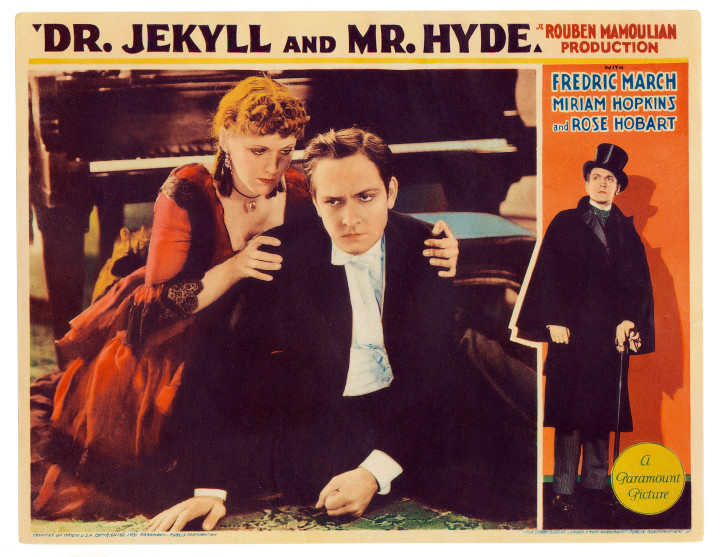When I was 15 years old my father agreed to take me 65 miles — from Lake Wales to Tampa, Fla. — to the University of South Florida to see a double feature of Love Me Tonight (1932) and Dr. Jekyll and Mr. Hyde. It was part of a Rouben Mamoulian retrospective that was making its way across colleges at that time. Being a hardcore horror fan I really wanted to see Jekyll and Hyde, which I’d read about and seen stills from since the age of nine. But there was a catch. It was a school night and I was informed from the onset that we were only staying for the first movie. I was nursing two possible hopes — either that the films would be (despite the listings) in chronological order, or that my father would relent on the second feature. Neither eventuality transpired, though I didn’t mind as much as I might have because I’d fallen in love with Love Me Tonight. But I did mind, though I now suspect it was for the best, because there’s no way that truncated version of Jekyll and Hyde wouldn’t have been a crushing disappointment — especially as the second feature on that double bill. It would be years before I saw it, and more years till I saw it complete.
Rouben Mamoulian was one of the early sound film’s great innovators, which is especially interesting in that he was one of those directors imported from the stage for the express purpose of dealing with what the movies had never had to consider before — actors who talked. But Mamoulian was different than most of these imports. He had no interest in making “canned theater,” which was what a lot of stage directors turned out. He saw the movies as a new creative tool that allowed him the freedom to do things that could never have been accomplished on the stage. Jekyll and Hyde marked his third film and he was just about at the height of his powers. He hits the viewers with everything he’d learned — and adds more.
The film starts with an extended — and still unique — use of subjective camera where we see the proceedings through Jekyll’s (Fredric March) eyes (or an approximation at least). And that’s only the first three or four minutes of the succession of cinematic wizardry to follow. Whether or not Mamoulian actually invented anything is debatable. Subjective camera (which occurs in smaller doses throughout the film), optical wipes, split-screen, long dissolves that have two overlapping scenes playing at once, even the still startling transformation from Jekyll to Hyde were at most variations on existing techniques. But Mamoulian takes these things further than anyone had dared previously — and he makes them his own. The optical wipe — then a fairly new element — had never been used the way he used it (and no one ever used it this way again). For Mamoulian this isn’t just a clever scene transition, but a way of creating a new kind of split-screen. Calling the cumulative effect “breathtaking” is no exaggerration. This, in fact, was one of the problems with the shortened version — it was exhausting. The feeling was like you were being dragged through a fascinating museum with no time to really look at anything. Slowed to its proper pace, the results were — and are — something else again. It is, in fact, one of the great horror films.
The Thursday Horror Picture Show will screen Dr. Jekyll and Mr. Hyde Thursday, Aug. 27 at 8 p.m. in Theater Six at The Carolina Asheville and will be hosted by Xpress movie critics Ken Hanke and Justin Souther.







Great show Ken, I forgot how fantastic that version is. When it ended I reminded myself of some not as good versions. The Spencer Tracy adaptation and Mary Reilly. Julia Roberts was pretty bad in that but I thought John Malcovich was great as the Doctor.
I’ve never seen Mary Reilly. The Tracy version is pretty dire, which is interesting since it follows the 1931 screenplay very closely.